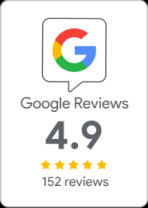How to Make Meetings Less Yawn-Inducing
How to Make Meetings Less Yawn-Inducing
Most people dread meetings. They often drag on, with discussions that go in circles. After stifling yawns for what feels like an eternity, you walk out wondering what the point was. Yet, meetings are often necessary. So, how can you make meetings more productive and enjoyable? Here are a few simple tips.
Choose Your Venue Carefully
A dark, stuffy room with no ventilation or windows is an invitation to yawn city. If possible, use a meeting room with windows and air-conditioning. Fresh air can help people stay more alert, and a more open environment encourages active participation.
Allow Refreshments
Provide jugs of ice water, tea, or coffee for the meeting. It helps refresh people and keep them alert.
Outline the Agenda and Timeframes
Set the framework for the meeting by outlining the agenda and objectives at the start. Be clear about what you hope to achieve and what you expect from each participant. Remind them that discussions need to be concise and effective.
Time Keeping
Define a realistic timeframe for the meeting. If giving a presentation, keep it to 20 minutes or less, with ample time afterward for questions and discussion. Consider the agenda items and the expected discussion around each one. If there are more than four points to discuss, schedule a second meeting later. It's easier for people to stay focused with fewer discussion points.
Keep a strict eye on the time and manage discussions. Inform the group of the time limit at the beginning of each agenda item. When time is nearly up, do a time check and wrap up the discussion. If more detail is needed, assign tasks and schedule a follow-up meeting rather than dragging out the agenda.
Keep Discussions on Track
Meetings often get sidetracked, and before you know it, the discussion veers off point. If this happens, bring it back on topic. Meetings will immediately become more productive when the focus is maintained.
Meeting Wrap-Up
Ensure the meeting ends on time. When meetings run over, people lose focus, thinking about other tasks they need to do. At the end of the meeting, summarise the discussion points and decisions made. Reconfirm specific tasks assigned to individuals and decide on a timeframe for delivery. Finally, thank everyone for their participation and inform them when the next meeting will be held.
When meetings are held productively, people won't mind participating. They'll know their time is well spent and will leave either having learned something or feeling their input was valued. Active, constructive meetings don't give people time to yawn and ultimately build a better culture for your business.







